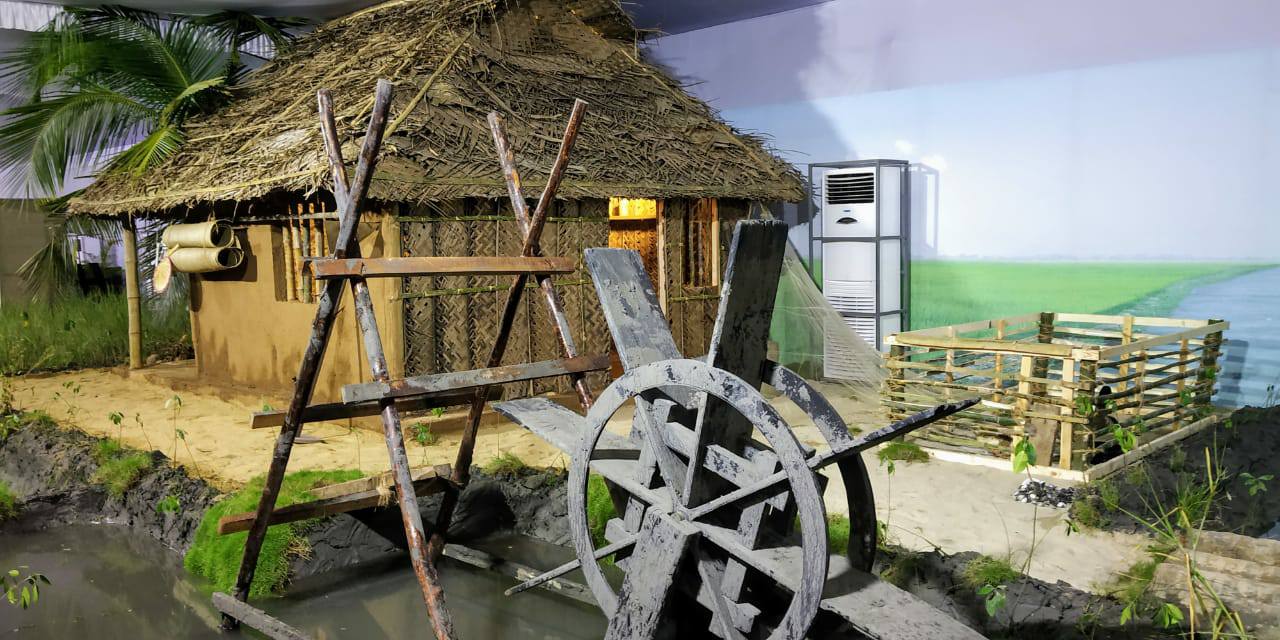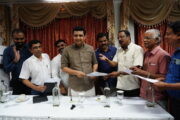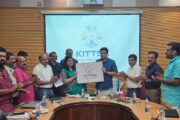Responsible Tourism stall at KTM showcases the agrarian spirit of Kerala

The Responsible Tourism stall at the Kerala Travel Mart 2018 is winning the hearts of many with its innovative, yet traditional design. The exhibition stall at the four-day KTM is bustling with activity after its inauguration by Union Tourism Minister K J Alphons. Responsible Tourism promotes community activities with focus on economic boost, environment protection and socio-cultural protection.
A man pedalling an irrigation wheel, a woman braiding coconut fronds, two veterans weaving cloth, a tribal taking aim with his bow and arrow. An assemblage of such activities with renewed spirit presents a microcosm of Kerala’s rural life at the stall in KTM.
Responsible Tourism is an innovative endeavour the state government, launched a decade ago. Top functionaries of the 2008-launched RT note that sight-seeing alone cannot help Kerala tourism thrive in the long run. “We need to show visitors to our state the actual ethnic activities of our people. Knowing more about the local populace is also a matter of tourist curiosity,” said Rupeshkumar K, Coordinator of State RT Mission, whose project recently entered its third phase which is pan-Kerala. “That is essential to make tourism experiential.”
The RT’s expansive exhibition area has, for instance, a miniature version of a paddy field. “It’s not just about the crop and its life cycle,” points out Rupeshkumar, sitting on the lawn, next to a video that runs eight short movies on Kerala Tourism. “You can get an idea of fishing, duck farming and yesteryear irrigation methods.”

Among such farmers at the exhibition is Elias K P, from Chottanikkara in Ernakulam district. “I was into climbing coconut trees while also being a mimicry artiste. Agriculture, too, is slowly becoming a profitable venture of late,” he said.
Sitting on the veranda of a thatched hut close to Elias’s wheel, Sathi Murali braids a coconut frond with practiced ease. “I have been doing this for four decades, since the age of 15,” she said. “For the past decade, RT keeps bringing tourists to my house. They are eager to know how we lock the palm-leaves; many would sit with me and try it themselves. It takes me barely ten minutes to plait a palm-leaf. My visitors take half-an-hour to do so. It’s fun, and money-earning too,” she said. Sathi sells the braided palm-leaves to her customers that also include restaurants. “We charge 10 rupees a piece, and it usually lasts an year” she said. The mud-raised hut at the RT stall sports a hurricane lamp, rolled grass-mat and palm-leaf fan besides a rounded measure holding fresh paddy.
Ajitha Suresh, from Kumarakom, is spinning coir at KTM exhibition, a trade she learned as a native of Muhamma in coastal Alappuzha district. “After getting married in 2001, I had lost touch with coir-making. Then, in this decade, RT helped me regain it,” said Ajitha, who also has foreigner visitors at her home, keen to know how Kerala women wear the traditional set mundu dress.

Across a dyke is another strip of land where two women from heritage-rich Chennamangalam north of Kochi display the rigour of weaving that has kept their village a thriving economic hub for centuries. “I lost my loom (costing Rs 25,000) in last month’s floods, but we (weavers’ cooperatives) are making efforts to revive business,” said Valsala V A, who is from Vavvakkad. “It’s a job we can afford to do sitting home. Even this loom was partly damaged in the deluge, but we have managed to make it functional,” said another weaver, Manapparambil Soudamini.
Up north from Malabar, the thrust region of KTM-2018, has its Wayanad tribals. Among them is Kochangode Govindan, holding a traditional bow and arrow, much to the fascination of the visitors at the exhibition. “Men from across the globe visit my house in Ambalavayal. I give them trials to aim at a target. They enjoy it. I too,” he said adding that his village also has craftsman who are adept in making bows and arrows. “We never use this weapon to kill people. It’s solely for hunting. From time immemorial,” he said.








